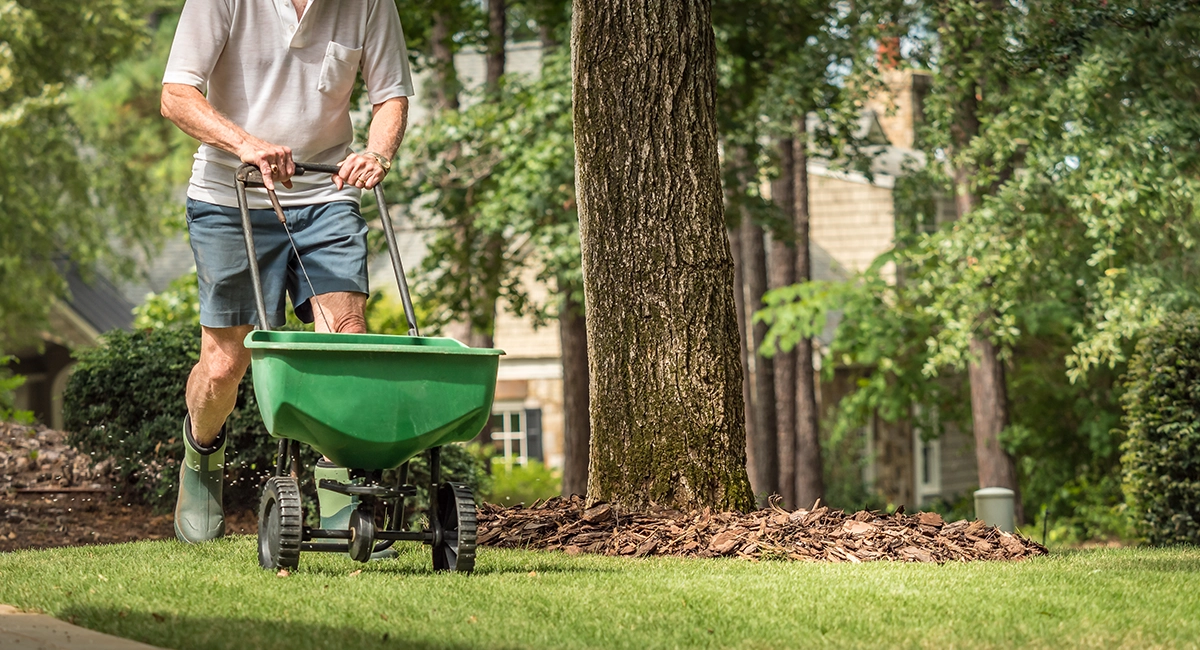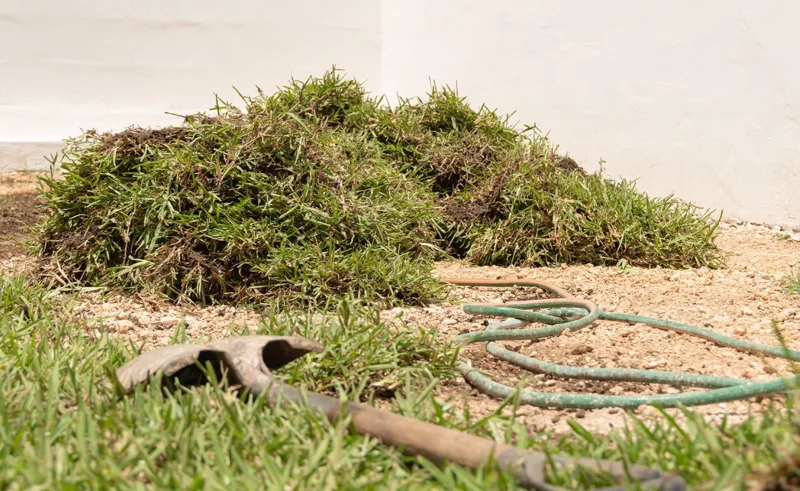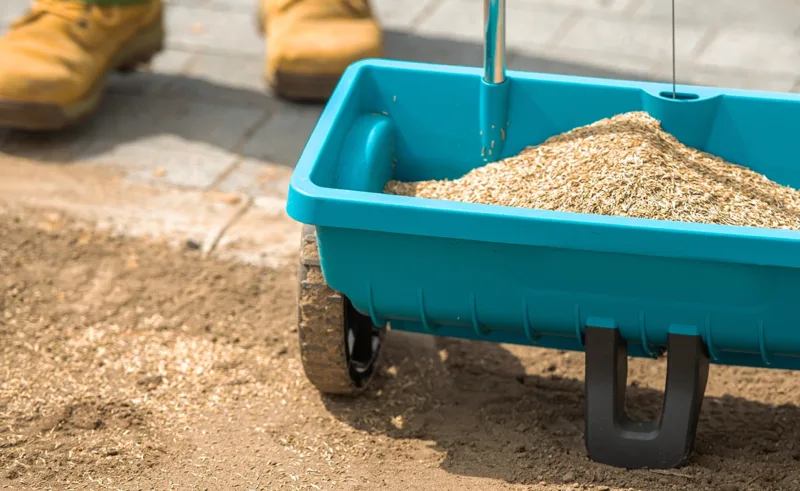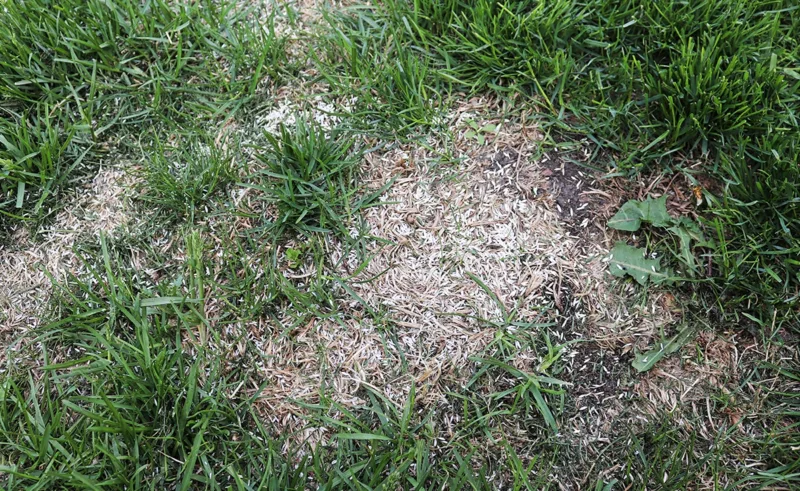Recently updated on May 29th, 2024

When it comes to lawn care, everyone wants to be the expert. Everyone thinks they know the perfect time to start spreading their grass seed and how to do it. But do they really?
It’s quite the complicated process that we all want to master. Let Ocean State Job Lot show you the way with the when, how, and why so that you can be the kings and queens of the green lawns in the neighborhood.

Choosing the Right Time to Seed
Timing is crucial when spreading grass seed. There are two types of grass seed to spread. For warm-season grasses, spring is best when soil temperatures are consistently above 65°F. Avoid extreme heat or cold. You’ll want stable conditions before spreading, so check weather forecasts for stable conditions.
Aim for late summer to early fall for cool-season grasses, as soil temperatures are still warm, but air temperatures are cooler, promoting optimal germination.

Selecting the Right Grass Seed
Did you know that there are many types of grass seed to consider? We’ve got plenty at amazing prices that will beat most retailers’ prices. As for types of grass seed, consider factors like your climate, soil type, and sunlight levels.
For cooler climates, opt for cool-season grasses like Kentucky bluegrass or fescue.
For warmer regions, Bermuda or Zoysia grasses thrive. You’ll want to keep in mind how much sun exposure your lawn gets; shade-tolerant varieties like fine fescue are ideal for shady areas.
No matter what you choose, you’ll want to check the seed label for information on drought tolerance, disease resistance, and maintenance requirements.

Preparing Your Lawn
Do this before starting the process of spreading down your seed:
- Clear the area of debris and weeds.
- Loosen the soil with a rake or tiller.
- Level the area to make it even and prevent puddles of water. Go through your assortment of tools to find which is best to use.
- Consider adding organic matter like compost to enrich soil.
- Test the soil for pH level for optimal growth.

Spreading the Grass Seed
When it’s time to spread the grass seed, make sure you spread it evenly for a lush, uniform lawn. There’s two ways to go about it: using a traditional or manual spreader or by using your hands.
Your traditional spreader is made for the bigger areas of your lawn. You can start with a perpendicular pass along the lawn’s edge, then work back and forth in parallel lines, overlapping slightly to avoid missed spots. Adjust the spreader settings as needed for accurate application. If need be, you can toss seeds by hand in those hard-to-reach spots.
Manual Spreading Techniques
This is a route that’s most used in smaller areas that have things like trees or other obstacles around them. Start by dividing the area into smaller sections for better control. Using a handheld spreader or by hand, evenly distribute the seed over the prepared soil surface. Take care to avoid clumps or uneven distribution by spreading in a crisscross pattern. After seeding, gently rake the area to ensure good seed-to-soil contact.
Using a Spreader
Spreading grass seed with a spreader ensures even coverage and efficient use of seed. Begin by calibrating the spreader according to the seed type and recommended application rate. Fill the hopper with seed and adjust the spreader settings as needed. Start by making perimeter passes along the lawn edges, then move back and forth in parallel lines, overlapping slightly to prevent missed spots. After spreading, lightly rake the area to ensure good seed-to-soil contact.

Aftercare: Watering and Maintenance
If spreading the seed is step one, watering is the very important step two. With that in mind, water the seeded area lightly immediately after spreading to settle the seed into the soil. Keep the soil consistently moist, watering lightly multiple times a day if needed, especially in hot or dry weather. Avoid overwatering, which can wash away seeds or promote fungal growth.
Once the grass begins to germinate, gradually reduce watering frequency but increase the amount of water applied. As the grass grows, mow it regularly, keeping it at the recommended height for optimal health.

Troubleshooting Common Issues
If patches of grass fail to germinate, it may be due to uneven seed distribution or insufficient soil contact. Rake these areas lightly and reseed as needed. Excessive water can wash away seeds or promote fungal diseases; adjust watering accordingly. If weeds emerge alongside grass, consider using a selective herbicide once the grass is established. For compacted soil that’s hindering growth, aerate the lawn before seeding.
Don’t forget to surround your newly planted lawn with your very own pathway to paradise, if you will. Visit your local Ocean State Job Lot for the most amazing prices and ideas around to help you year round.
